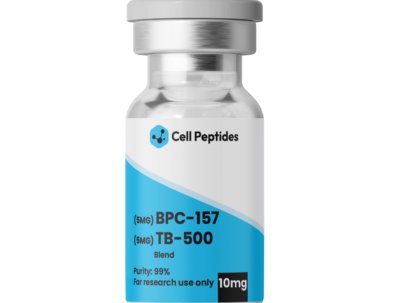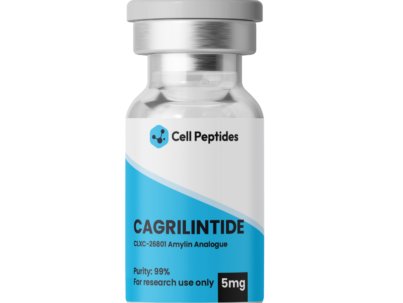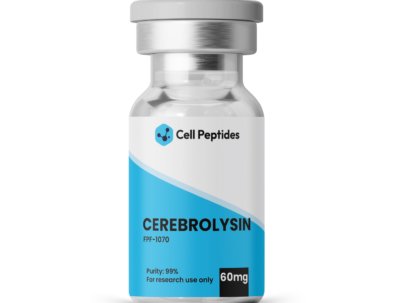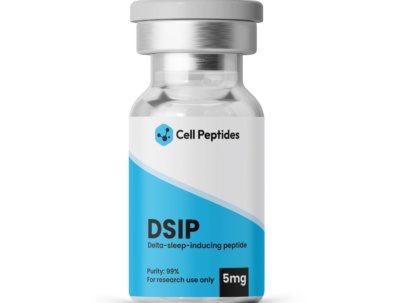- Fast shipping in Europe & USA
- Made in ISO 9001:2015 certified lab
- info@cellpeptides.com
Peptides for longevity are a growing focus in biomedical research, targeting age-related decline at the cellular and molecular level. These compounds are studied for their effects on inflammation, mitochondrial health, telomere preservation, and overall resilience in aging models.
The “Peptides for Longevity” category refers to a class of research peptides being studied for their potential to support healthy aging, enhance cellular repair mechanisms, and protect against age-associated decline. These compounds are of particular interest in research models investigating chronic inflammation, mitochondrial dysfunction, oxidative damage, hormonal dysregulation, and neurodegeneration.
Longevity peptides may influence processes such as telomerase activity, sirtuin activation, ATP production, and immune modulation, key pathways associated with lifespan regulation and age-related disease resistance. Their applications in preclinical models span across metabolic health, neuroprotection, muscle wasting, and immune rejuvenation.
As interest in longevity science continues to grow, researchers are increasingly exploring how targeted peptides might offer insight into slowing or mitigating the effects of biological aging.
Disclaimer: All peptides discussed in this article are intended for laboratory research use only. Any references to effects in humans are based on peer-reviewed scientific literature and do not imply therapeutic use.
Longevity peptides are short amino acid sequences studied for their ability to influence key cellular mechanisms involved in aging, tissue regeneration, and disease resistance. In laboratory settings, these peptides have been shown to activate pathways that support healthier aging and extended cellular function.
Research in this space focuses on several critical biological functions:
Scientists categorize longevity peptides into several functional groups:
These peptides are not approved for therapeutic use and are exclusively for scientific study.
Longevity peptides function across multiple biological systems, targeting the root causes of aging such as DNA damage, mitochondrial decline, immune exhaustion, and cognitive degeneration. Below is a breakdown of how specific peptides contribute to anti-aging and life-extension research:
These pathways collectively support a wide spectrum of longevity-focused studies.
Longevity peptides continue to be evaluated across global research programs, with a few compounds entering limited clinical use in specific regions. Epithalon, Thymalin, and Thymosin Alpha-1 have been studied and occasionally used in medical or experimental contexts in Russia and parts of Europe, particularly for aging-related and immunological conditions. However, none are approved by the FDA for anti-aging or regenerative therapies.
Peptides like NAD+ and MOTS-c are considered investigational and are commonly used in laboratory models exploring metabolic and mitochondrial decline. These compounds show promise in promoting energy balance, reducing fatigue, and improving cellular resilience, but remain strictly for research.
Some observed effects in lab settings include:
All peptides must be handled under sterile conditions, using validated reconstitution and dosing protocols. Improper handling can lead to contamination, degradation, or inaccurate research outcomes.
Peptides for longevity are gaining significant traction in aging and regenerative research due to their ability to influence key biological pathways. The following research peptides stand out for their promising roles in cellular health, mitochondrial function, and neuroprotection:
Each of these compounds is designed exclusively for laboratory research.
Proper lab handling of longevity peptides ensures accurate and reproducible outcomes in preclinical studies. Most peptides in this category are supplied as lyophilized powders and must be reconstituted before use.
Reconstitution:
Use bacteriostatic water for general peptides.
Storage:
Dosing:
Typical preclinical protocols use 0.05–1 mg/kg depending on the model and target pathway.
Common Research Endpoints:
Always follow published research protocols, maintain sterile technique, and document all concentrations, injection timing, and endpoints for reliable data.
Peptides like Epithalon, NAD+, MOTS-c, and Thymalin have extensive data in longevity research models.
Yes, combinations such as Epithalon + MOTS-c or NAD+ + SS-31 are commonly studied for multi-pathway support.
Yes. Neuropeptides like Semax, DSIP, and Cerebrolysin have shown benefits in cognitive aging, neuroregeneration, and stress regulation.
Vast majority of peptides should be mixed with bacteriostatic water. That’s that only “special” requirement.
To finish up, peptides for longevity are gaining traction in research focused on healthy aging, cellular regeneration, and metabolic resilience. With promising compounds, studies show potential in enhancing mitochondrial function, extending lifespan markers, and supporting immune and neurological health.
Explore the complete CellPeptides’ longevity peptide collection below to support your anti-aging and regenerative science initiatives.
Peptides for Longevity
Peptides for longevity are a growing focus in biomedical research, targeting age-related decline at the cellular and molecular level. These compounds are studied for their effects on inflammation, mitochondrial health, telomere preservation, and overall resilience in aging models.
The “Peptides for Longevity” category refers to a class of research peptides being studied for their potential to support healthy aging, enhance cellular repair mechanisms, and protect against age-associated decline. These compounds are of particular interest in research models investigating chronic inflammation, mitochondrial dysfunction, oxidative damage, hormonal dysregulation, and neurodegeneration.
Longevity peptides may influence processes such as telomerase activity, sirtuin activation, ATP production, and immune modulation, key pathways associated with lifespan regulation and age-related disease resistance. Their applications in preclinical models span across metabolic health, neuroprotection, muscle wasting, and immune rejuvenation.
As interest in longevity science continues to grow, researchers are increasingly exploring how targeted peptides might offer insight into slowing or mitigating the effects of biological aging.
Disclaimer: All peptides discussed in this article are intended for laboratory research use only. Any references to effects in humans are based on peer-reviewed scientific literature and do not imply therapeutic use.
Longevity peptides are short amino acid sequences studied for their ability to influence key cellular mechanisms involved in aging, tissue regeneration, and disease resistance. In laboratory settings, these peptides have been shown to activate pathways that support healthier aging and extended cellular function.
Research in this space focuses on several critical biological functions:
Scientists categorize longevity peptides into several functional groups:
These peptides are not approved for therapeutic use and are exclusively for scientific study.
Longevity peptides function across multiple biological systems, targeting the root causes of aging such as DNA damage, mitochondrial decline, immune exhaustion, and cognitive degeneration. Below is a breakdown of how specific peptides contribute to anti-aging and life-extension research:
These pathways collectively support a wide spectrum of longevity-focused studies.
Longevity peptides continue to be evaluated across global research programs, with a few compounds entering limited clinical use in specific regions. Epithalon, Thymalin, and Thymosin Alpha-1 have been studied and occasionally used in medical or experimental contexts in Russia and parts of Europe, particularly for aging-related and immunological conditions. However, none are approved by the FDA for anti-aging or regenerative therapies.
Peptides like NAD+ and MOTS-c are considered investigational and are commonly used in laboratory models exploring metabolic and mitochondrial decline. These compounds show promise in promoting energy balance, reducing fatigue, and improving cellular resilience, but remain strictly for research.
Some observed effects in lab settings include:
All peptides must be handled under sterile conditions, using validated reconstitution and dosing protocols. Improper handling can lead to contamination, degradation, or inaccurate research outcomes.
Peptides for longevity are gaining significant traction in aging and regenerative research due to their ability to influence key biological pathways. The following research peptides stand out for their promising roles in cellular health, mitochondrial function, and neuroprotection:
Each of these compounds is designed exclusively for laboratory research.
Proper lab handling of longevity peptides ensures accurate and reproducible outcomes in preclinical studies. Most peptides in this category are supplied as lyophilized powders and must be reconstituted before use.
Reconstitution:
Use bacteriostatic water for general peptides.
Storage:
Dosing:
Typical preclinical protocols use 0.05–1 mg/kg depending on the model and target pathway.
Common Research Endpoints:
Always follow published research protocols, maintain sterile technique, and document all concentrations, injection timing, and endpoints for reliable data.
Peptides like Epithalon, NAD+, MOTS-c, and Thymalin have extensive data in longevity research models.
Yes, combinations such as Epithalon + MOTS-c or NAD+ + SS-31 are commonly studied for multi-pathway support.
Yes. Neuropeptides like Semax, DSIP, and Cerebrolysin have shown benefits in cognitive aging, neuroregeneration, and stress regulation.
Vast majority of peptides should be mixed with bacteriostatic water. That’s that only “special” requirement.
To finish up, peptides for longevity are gaining traction in research focused on healthy aging, cellular regeneration, and metabolic resilience. With promising compounds, studies show potential in enhancing mitochondrial function, extending lifespan markers, and supporting immune and neurological health.
Explore the complete CellPeptides’ longevity peptide collection below to support your anti-aging and regenerative science initiatives.







